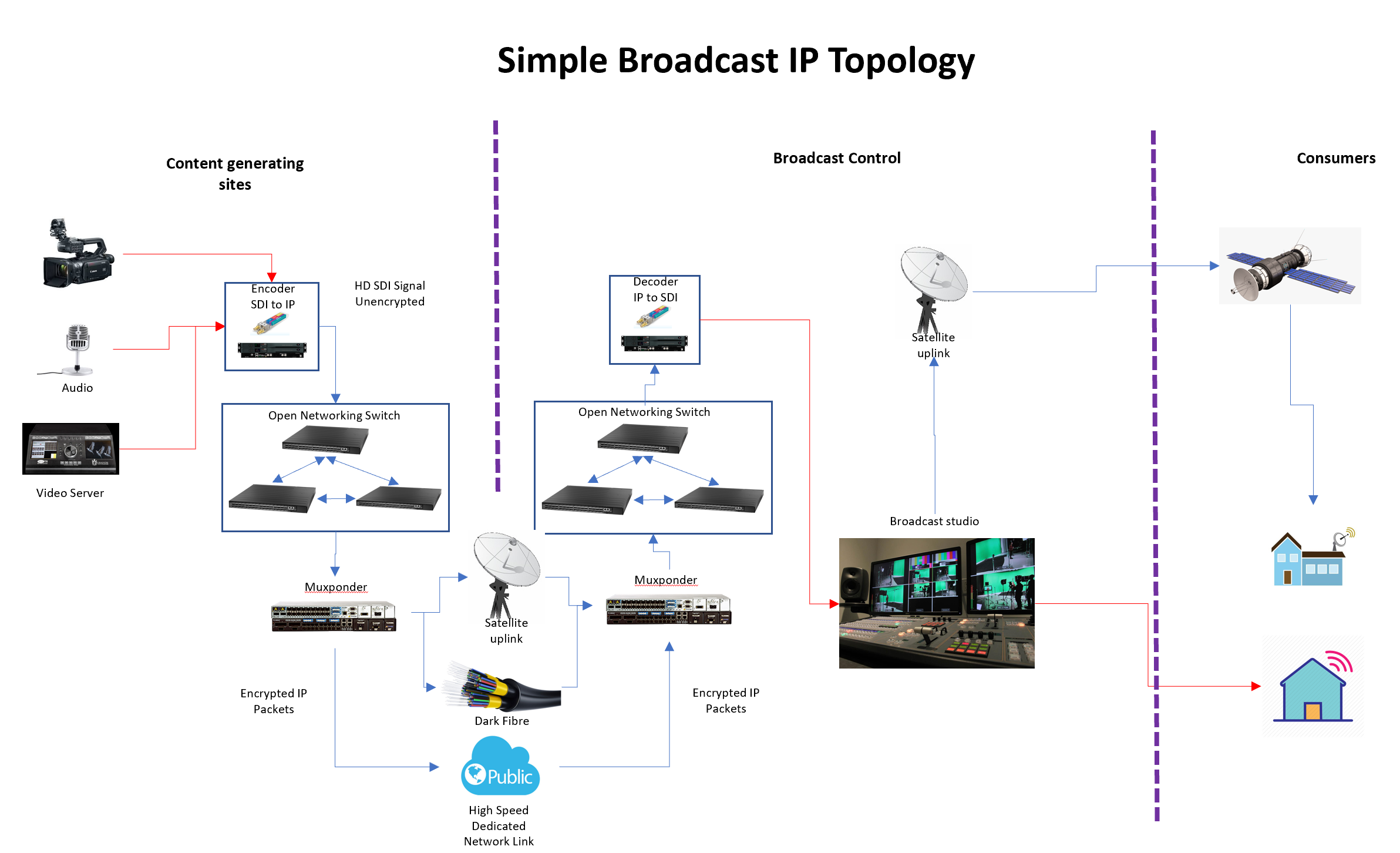...
| Name | Organisation | |
|---|---|---|
| Kamal Krishna Bhatt | Stordis GmbH | kamal.bhatt@stordis.com |
Overview
Presentation
| View file | ||||
|---|---|---|---|---|
|
SDI over IP
Traditional broadcast Infrastructure built with SDI Baseband Base-band Routers, coaxial cables and BNC connectors is transitioning to Ethernet using off-the-shelf network switches and SDN control. The increasing speeds supported by Ethernet Switches and the corresponding improvement in aggregate non-blocking switch and network throughput has paved the way for the use of IP/Ethernet to transport critical broadcast applications in a cost-effective manner, while delivering the same robustness and stability of legacy SDI and MADI router operations – all with greatly increased agility and flexibility to meet ever evolving media formats.
...
Following is a simple topology of broadcast using IP NW.
Features
Fault tolerance & Robustness
...
One of the most important feature to have in controller, should have following capabilities:
...
But even if we modify ONOS to create multiple paths for a pair of source and destination traffic will always be flowing which will be a waste of BW.
To over-come that, backup flows with arbitrary but unique matching criteria will be created which will not be matched to any traffic in network while a flow is a backup path not the active path but as soon as there is a failure in active path or user want to switch the path intentionally then packet header will be updated with arbitrary match criteria to match new active path, this packet processing will be done either in P4 or using OF experimenters in switch.
This procedure if of generating arbitrary match criteria and modifying packet header is similar to one also used in switching of RTP streams section below. This mechanism can evolve as an generic framework for packet processing.
ONOS also support clusteringsupports clustering so requirement for HA is met.
Support for LAG is not present in the ONOS at the moment, it is to be implemented. NOS like Pica8 support it we need to interface with it.
Traffic Engineering
Controller should have a mechanism by which it is able to choose and setup best available intents for a according to specific traffic type. To achieve this controller should be able to determine:
- Quality of Link in terms of latency and bandwidth – Latency and Bandwidth of intents– With the known latency and bandwidth properties, controller should be able to determine which intents (more than one) to deploy for a specific traffic types(traffic types like live audio, video, logging are identified by vlan in most cases) with their priorities (in case of failure priority helps to choose for next intent) i.e. For a real time audio stream, latency of path is crucial a priority than its bandwidth (for sure there should be minimum bandwidth available to carry voice stream), for a normal video file play latency may not be crucial a priority and it can take longer path, for a an HD video file transfer high bandwidth can be important.Stream Switching latency – Time required to switch a stream from different sourcesa priority rather than latency.
Solution
To calculate latency :
...
Real time bandwidth usage is available in ONOS which can be used in combination with port capacity can be used to know the actual available BW.Stream
Switching
...
Switching of RTP streams
This is another important requirement to have in Broad-cast controller. Switching of RTP streams can occur in various scenarios like:
...
- Port configuration like port speed, VLan, trunk, bridge etc.
- Handling of SDI and IP NW together.
- Interact with AMWA NMOS database.
- Security - access security i.e. prevent unwanted devices and packet security i.e. packet encryption.
- NAT (Network Address Translation) - it is already supported in OpenFlow rule instructions in ONOS.
Discussion
| Widget Connector | ||
|---|---|---|
|
References
[1] http://citeseerx.ist.psu.edu/viewdoc/download?doi=10.1.1.673.7881&rep=rep1&type=pdf
...
[4] https://www.thebroadcastbridge.com/content/entry/7722/transition-strategies-sdi-to-ip

